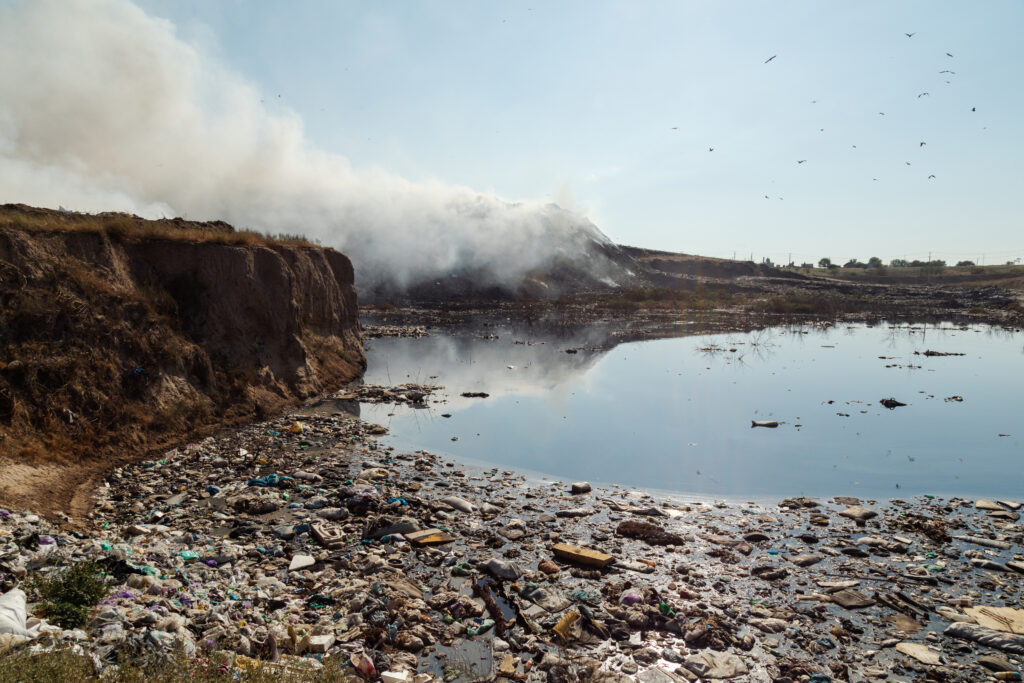The regulatory landscape for PFAS (per- and polyfluoroalkyl substances) is shifting fast – especially for landfill leachate. The U.S. EPA’s Plan 15 signals that revised Effluent Limitations Guidelines (ELGs) for landfill leachate are warranted and will soon force additional controls on PFAS discharges from landfills on a nationwide basis. Meanwhile, many states are already moving ahead with their own stricter discharge or biosolids limits. These developments are putting waste and landfill management operators under real pressure to retool their leachate treatment strategies.
The Regulatory Push: What Plan 15 Means for Landfills
Under the Clean Water Act, ELGs set technology-based standards for industrial wastewater discharges. Plan 15 announces additional efforts aimed explicitly at PFAS, including revisions to ELGs for the Landfills category (CFR Part 445). In plain terms: landfills discharging leachate may soon face federally mandated PFAS limits in addition to individualistic regulatory pressures.

That said, the final shape and timing of the rule are still in flux. Because states are already acting, many landfill operators can no longer wait to adapt – they need immediate and robust treatment strategies now.
Why Conventional PFAS Treatment Methods Alone Often Fall Short
Operators already know the standard toolbox: foam fractionation, granular activated carbon (GAC), and selective ion exchange (IX). These methods can work for some PFAS compounds at modest concentrations, but landfill leachate is a particularly complex wastewater stream, loaded with organics, suspended solids, metals, ammonia, salts, and myriad of foulants that complicate PFAS removal.
In practice, foam fraction and adsorption (GAC/IX) often struggle to achieve the removal of the broad spectrum of PFAS species and other constituents of concern that regulators demand. In many cases, operators need prefiltration followed by reverse osmosis (RO) to reliably hit regulatory thresholds for discharge. Some landfills further employ tertiary polishing or concentrate treatment for PFAS on a smaller stream.
RO, when applied correctly, has shown PFAS removals of up to ~99 % for certain compounds, but deploying conventional RO in leachate systems brings its own set of challenges.
The Limits of Conventional RO in Leachate Applications
The high organic load, diverse foulants, and fluctuating characteristics of landfill leachate mean that conventional RO membranes often struggle. They foul quickly, require frequent clean-in-place (CIP) cycles, and face shortened lifespans or replacement.
Experience shows that landfill leachate’s high fouling potential often makes some form of pretreatment necessary to protect RO or NF membranes. RO systems must also withstand rapid changes in water quality, while the cost of managing brine concentrate remains a significant challenge.
In effect, unless the membranes are engineered for fouling resistance and supported by robust pretreatment, the operational stability and cost of a leachate RO system will become untenable.
ZwitterCo’s Approach: Fighting Fouling Before It Wins
This is where ZwitterCo’s solutions portfolio comes in. Our membranes are specifically engineered to resist organic fouling—both in the pretreatment stage and in the RO step itself. Operational field and lab data suggest significant reductions in cleaning frequency (up to 90 %) compared with conventional RO membranes, along with longer uptimes and extended membrane life.
Expedition SF can serve as a direct-filtration pretreatment solution: it filters out suspended solids and troublesome foulants before RO, reducing the load on downstream membranes. Coupling that with our Elevation RO membranes, which are designed with enhanced fouling resistance, operators get a system built for the harshest leachate environments.
Because these membranes are one-for-one compatible, many operators can retrofit existing RO systems rather than start from scratch, saving both time and capital costs.
Bridging the Gap: Rental Assets for Rapid Deployment
We recognize that many waste operators are already under public pressure and can’t wait until complete rebuilds are engineered and permitted. That’s why ZwitterCo maintains a fleet of full-scale rental assets. These units can be deployed quickly on site to give immediate relief (e.g. reducing trucked leachate, helping meet interim permit limits), while simultaneously collecting real-world performance data.
The data collected can feed into the design basis of the long-term, permanent treatment train. This approach helps operators avoid overdesign or surprises when scaling up full systems.
PFAS regulation is moving quickly, and landfill operators need solutions that go beyond stopgap measures. While options like foam fractionation and GAC/IX have their place, they often fall short in real-world leachate conditions. Reverse osmosis remains one of the few proven ways to achieve the low PFAS and other key contaminant limits regulators are setting—provided the membranes can withstand the fouling challenges unique to leachate.
ZwitterCo’s fouling-resistant membranes are specifically engineered for the complex conditions of landfill leachate. By resisting irreversible organic fouling, they deliver consistent performance where conventional RO systems typically fail. This durability allows operators to maintain treatment reliability, meet tightening PFAS regulations, and avoid the excessive downtime and maintenance costs that have long challenged leachate treatment.

